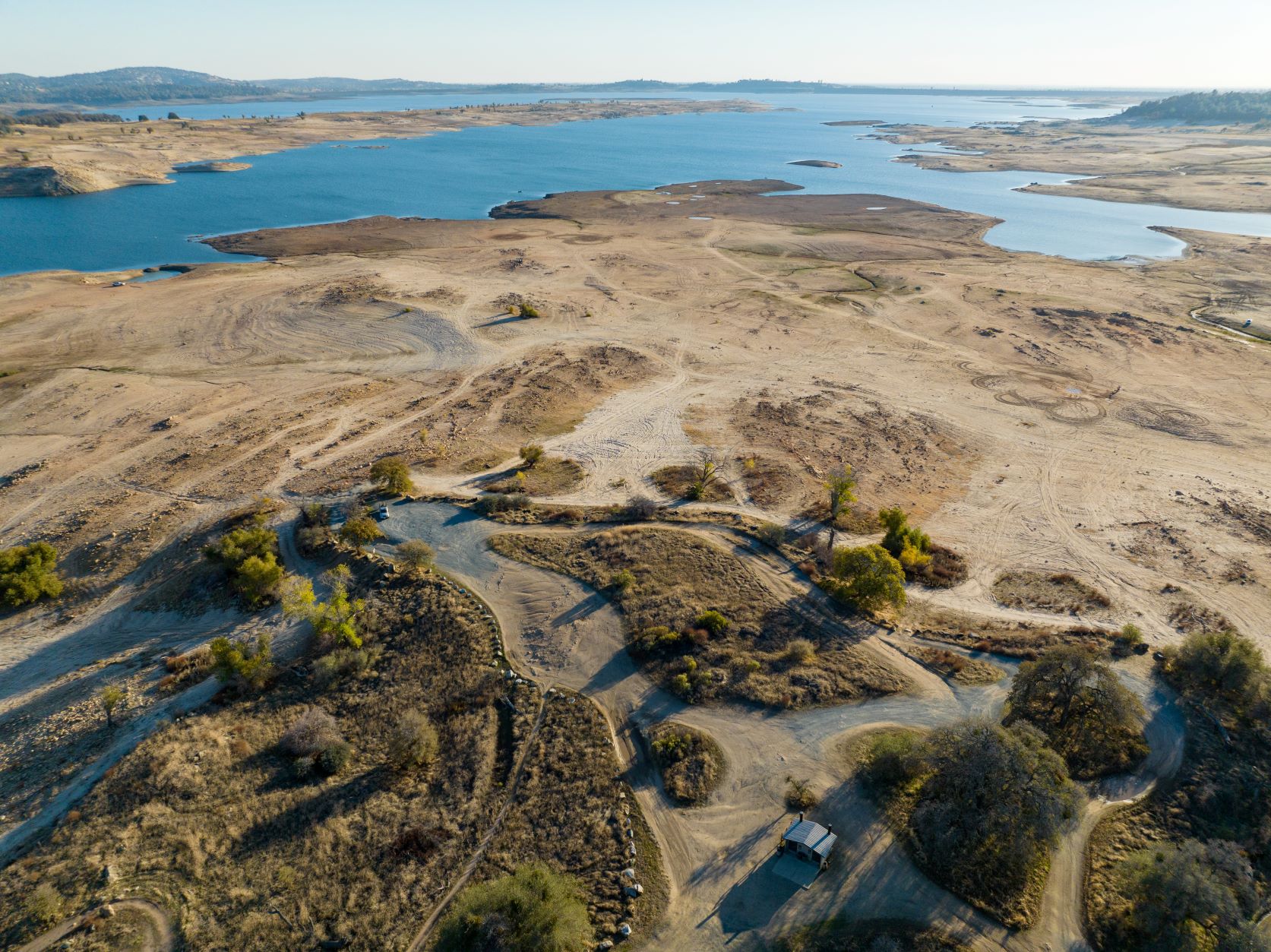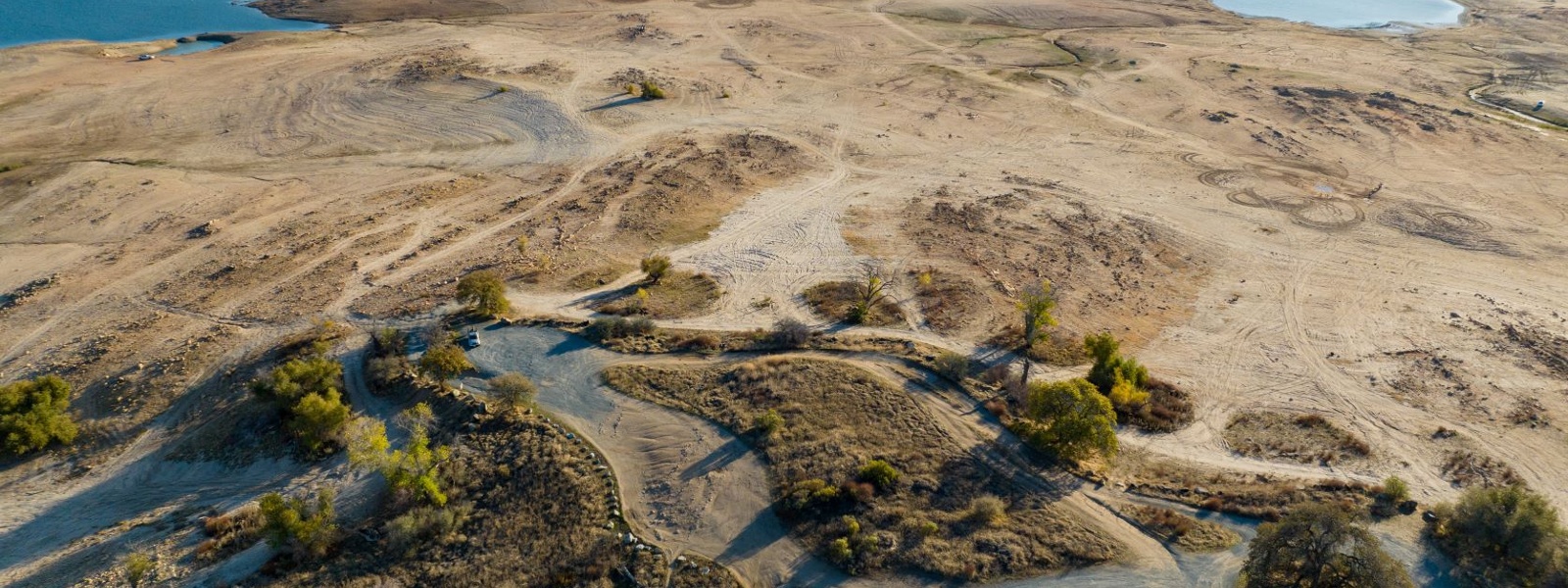Early allocation by state signals a fourth dry year


By Christine Souza
Storms that moistened parts of California last week were a drop in the bucket of what will be needed to build snowpack and fill reservoirs to reverse historic drought conditions.
Predicting a fourth year of extreme drought conditions in 2023, the California Department of Water Resources on Dec. 1 announced an initial water allocation of 5% of requested supplies next year for the State Water Project, which supplies water to 29 public water agencies that serve 27 million Californians.
DWR Director Karla Nemeth said allocations are typically low this time of year due to early-season uncertainty in hydrologic forecasting. She said, “The degree to which hotter and drier conditions are reducing runoff into rivers, streams and reservoirs means we have to be prepared for all possible outcomes.”
The 5% allocation is based on available water storage, projected water supply and water demands. Lake Oroville, SWP’s largest reservoir, ended the 2022 water year about 400,000 acre-feet higher than the previous year, which was the lowest storage level on record. Oroville remains just 55% of average for this time of year.
“We are in the dawn of a new era of State Water Project management as a changing climate disrupts the timing of California’s hydrology, and hotter and drier conditions absorb more water into the atmosphere and ground,” Nemeth said. “We all need to adapt and redouble our efforts to conserve this precious resource.”
California Farm Bureau President Jamie Johansson said the meager initial water allocation increases the urgency for state leaders to take action to safeguard and enhance the state’s water resources, including fast tracking state-funded projects to create additional storage, stormwater capture and groundwater recharge.
“Here we go again,” Johansson said. “This means that 27 million people and 750,000 acres of farmland are facing another year of uncertainty and economic hardships.”
The lowest initial SWP allocation was last year at zero percent, with limited water designated for unmet human health and safety needs. Last year’s final allocation was 5%. Four of the 29 state water contractors requested and received additional health and safety water supply.
The initial 5% allocation would be met by flows from winter storms entering the delta and stored water in San Luis Reservoir. If storage levels in Lake Oroville improve as the wet season progresses, the state water allocation could increase. DWR said it is working closely with senior water rights holders on the Feather River, downstream of Lake Oroville, to monitor conditions and assess water supply availability should dry weather persists.
Officials said they will assess requests for additional water necessary for health and safety, including minimum domestic, sanitation and fire-suppression needs.
On average, 75% of California’s annual precipitation falls from November through March, with the bulk of accumulation happening between December and February.
Brad Rippey, U.S. Department of Agriculture meteorologist and co-author of the U.S. Drought Monitor, said last week’s storms are an encouraging start.
“The outlook for December is actually fairly optimistic at this point,” Rippey said. “A new monthly precipitation outlook from the National Weather Service just came out, and it does indicate the likelihood of above-normal precipitation, especially in Northern California.”
With 90% of the season left to go, Rippey said there are 3 inches of liquid equivalency in the Sierra Nevada. In a normal year by April 1, that figure is closer to 30 inches.
“Every La Niña comes with a slightly different flavor but characteristically in Northern California, the storms perform much better in Northern California during La Niña than Southern California,” he said.
For California’s 154 intrastate reservoirs, Rippey said, storage is 68% of average and 36% of capacity. For the Colorado River Basin, storage is 46% of average and 29% of capacity, he said.
“The impact of this multiyear or megadrought is piling up,” Rippey said. “It just forces producers to make really tough decisions.”
California Farm Bureau Senior Counsel Chris Scheuring said science points to a changing hydrology for the state—from colder to warmer, snow to rain and from more frequent events to less frequent events, which may be more impactful.
“The atmospheric river that we hear so much about is expected to bring mega storms to California, if very infrequently, so what that means is we’ve really got to work proactively and creatively to use the water we’re going to have because it’s going to come,” Scheuring said. “We’re going to have much smaller windows of opportunity to take advantage of it.
“California is still going to have its water resources,” Scheuring added. “It’s just going to have them in a different way, and we have to respond with smart infrastructure and flexible thinking about capture.”
State water managers will reassess conditions monthly throughout the winter and spring. Starting in February, the assessments will incorporate snowpack data and runoff forecasts. Allocations are updated monthly as snowpack and runoff information is assessed. A final water allocation may be determined in May or June.
(Christine Souza is an assistant editor of Ag Alert. She may be contacted at csouza@cfbf.com.)




